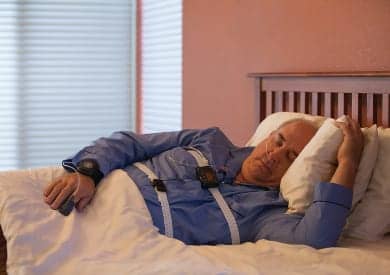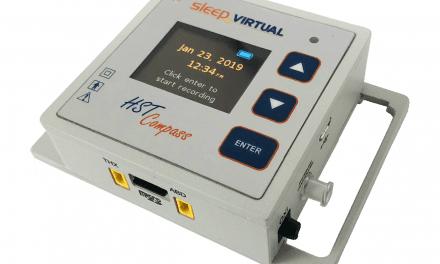
By Emerson M. Wickwire, PhD
Undoubtedly, the greatest changes to the practice of sleep medicine in the past several years involve the portable diagnosis of obstructive sleep apnea. Although many sleep centers have thus far employed a “wait and see” approach, it is now unequivocally clear that home sleep testing (HST) is here to stay.
So whether your organization is a physician-owned lab, independent diagnostic testing facility (IDTF), hospital-based facility, or part of a larger sleep network, you are faced with imminent choices. Continue reading to understand the pros and cons of the three most commonly used strategies for managing HST, then stride forward with formulating your own approach.
Option One: Insourcing
There are many reasons to start your own in-house HST program. The most salient are quality assurance of patient care, patient and referring provider satisfaction, and revenue potential. It’s also important to consider that the larger sleep networks now have established HST programs, placing non-HST-capable centers at a competitive disadvantage.
Comprehensive sleep centers should strive to provide the full range of sleep medicine services. So developing your own HST program is a logical extension to your continuum of patient care services. This also will help ensure your patients, referring providers, and the public think of you as the “one-stop shop” for all things sleep medicine.
The same reasoning holds true for IDTFs or hospital-based labs: You want to be known as the place to go for all forms of sleep testing.
Here are some questions to ask when implementing an in-house program.
Equipment
- Which testing device will you select?
- Will you purchase or lease your equipment?
- What are the consumables required for testing?
Clinical/Operational
- Which patients will you test with HST?
- When and where will patients retrieve their devices?
- Will patients be required to leave a deposit for the HST device?
- Who will educate patients and perform setups when needed?
- What trouble-shooting support will you offer, if any?
- Who will download data from returned devices?
- Will downloaded data be stored on a hard drive or a cloud?
- Who will read studies?
- Who will share results with patients?
- How will physicians be compensated for interpretations?
Program Development
- How will you leverage HST to promote and grow your program?
- How will you track HST outcomes?
- Will you seek accreditation?
Option Two: Outsourcing
Another option is to outsource your HST services. Much as medical testing companies administer home oximetry, HST companies also can administer tests to your patients. There are a variety of business models, and there are situations where you might choose to establish vendor-partner relationship(s).
Reasons for “outsourcing proactively” include availability of known, high-quality provider(s) with local presence, unique circumstances or opportunities, or simply being stretched too thin from a staffing perspective. In the vast majority of centers, HST will not support a full-time employee.
The biggest advantage to outsourcing is minimizing labor. Your assistant will submit the HST order, and the testing company will handle the rest, including all related interaction with the patient.
However, this presumed convenience comes at a cost. Because your patients perceive you as the orchestrator of their sleep care, they will look to you to ensure a smooth process. You will be held accountable for quality control, even though you have limited power to resolve most issues. You also lose control of the testing and interpretation process. (For example, you may not have access to the raw data.) Additionally, you may lose referrals due to a perceived weakness in your offerings. Finally, you will lose the potential revenue from administering and interpreting the HSTs themselves.
In spite of those drawbacks, working with a high-quality HST provider can be a good option in certain situations. Ask these questions to prepare.
- Is there a cost to patients?
- Who educates patients?
- How do patients obtain their devices?
- What trouble-shooting support is available for patients?
- What is the study turnaround time?
- Who reads the studies?
- How are negative studies handled?
- What satisfaction or quality assurance measures are collected? Are reports available to you?
- Do you have access to raw data if requested?
- Are there any “red flag”/STAT criteria?
- Who shares results with patients and referring physicians (eg, report primary care?)?
- Has this vendor-partner ever referred a patient for any other service or procedure other than that requested by the physician?
Option Three: More Wait and See
Launching HST: A Case Study
|
Of course, “waiting and seeing” is tempting. And in the short-term, it’s the path of least resistance. But if you do nothing, your patients will be increasingly directed to contracted HST providers with whom you have no relationship. Their primary care physicians will be upset with you, and you will sacrifice opportunities to build business relationships as well as to influence the practice of HST in your area.
As a reader of Sleep Review, you’re aware of the noninferiority of HST and APAP for certain patients treated under the care of sleep-trained physicians. You understand industry trends. You’ve personally experienced or heard horror stories regarding payor requirements and preauthorization. So, why pretend that you can’t see the writing on the wall?
HST is here to stay. It can help or hinder your organization. How you choose to proceed is up to you.
| Read Wickwire’s article “Cognitive Behavioral Treatment in Action.” |






